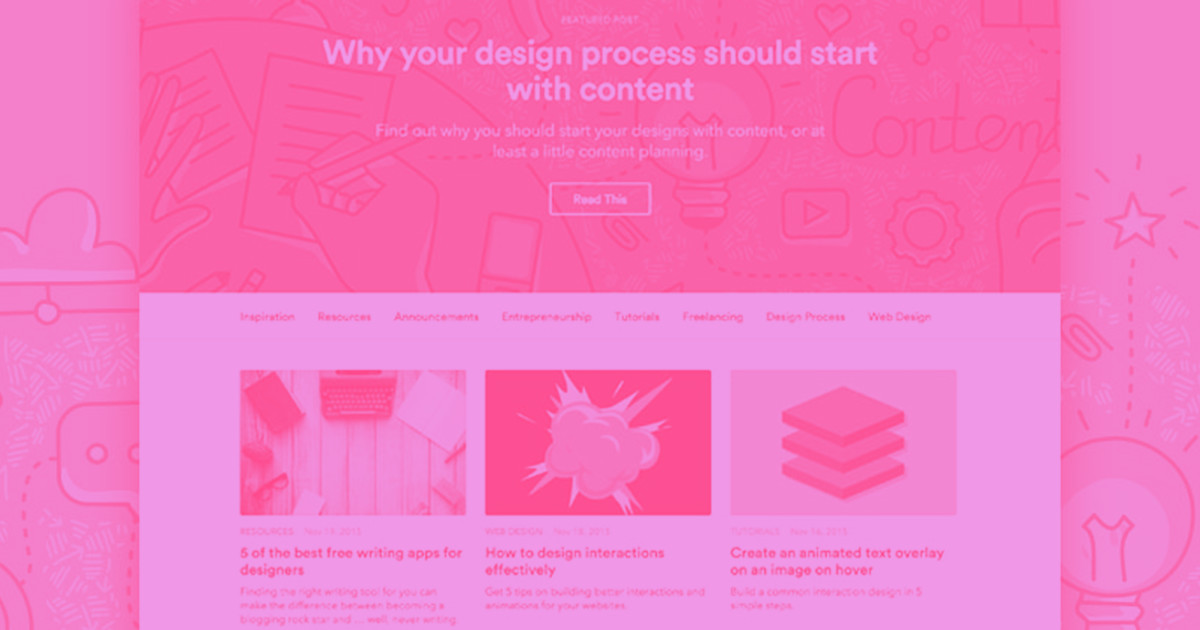When we learned that Zestful’s cofounder and CEO Mat Vogels was using Webflow to build not only its marketing site, but also its app, we knew we had to sit down with him. It helped that he used to work at Webflow.
What are the specific challenges you faced prior to using Webflow that made it an attractive option for Zestful?
Prior to Webflow, there was a limitation to what I could do as a designer. It would take me weeks or months to design something with Sketch and convert it to an HTML/CSS mockup. And then because that’s where my skills ended, I’d have to find an engineer or developer to make it work — whether it was a form integration or building software around designs I made.
Webflow made it possible to do in one step. And what used to take weeks, now takes, in a lot of cases, just hours.
So beyond the fact that Webflow was a familiar and powerful tool for you, are there specific advantages you've found from using it for Zestful?
Yes — Webflow allowed me to build out four or five different prototypes.

Each prototype was slightly different and highlighted potential features that we wanted to develop. Like any startup we are limited with the time and resources we had and couldn’t build all of them! So by building what looks and feels like the real product (using fancy Webflow IX) we could get real customer feedback before building anything.

When a user is using something on the actual web page and it feels real to them, the experience completely changes. You can get feedback that you just can't get from a static mockup or from something that's built with a tool like Sketch or InVision that feels kind of real, but users know isn't.

So I would send these mockups out and say, "Hey, check this out. Let me know what you think." They were using it like real software and making recommendations because, in their mind, it wasn't a fake prototype. It was the actual end-result software.
When you’re trying to move quickly, build something and get feedback in a matter of hours, there's really no better tool than Webflow.
What made Webflow stand out from similar tools that you might have used for that process?
Like I mentioned, customers can tell when something is real and when it isn't. And with Webflow, you're building on a platform that uses real code, which makes the end result feel that much more authentic.

I probably work faster in Webflow than in any other tool. For someone starting out, other tools might be quicker, but I guarantee the end result won’t foster an authentic experience the same way Webflow does. The differentiator for me was having the power to build something real and working in Webflow, instead of starting with another tool I’d need to hand off to a developer who could then build the real thing.



















Get started for free
Create custom, scalable websites — without writing code. Start building in Webflow.
Did you consider any alternate means of building out Zestful and, if so, what tipped the scales?
Not even close. I do use Sketch, but only for iconography, images, and graphics stuff. I don't think there was really a time we thought about switching. And like you mentioned, we had the experience of Webflow before, so it made sense.
I used to rely on Sketch for mobile app mockups, but now I almost exclusively build those in Webflow too!
When you do those mobile mockups, do you go ahead and start on desktop and scale it down, or do you just jump right down to the mobile viewport?
I went straight to the mobile viewport in this case because I was just designing the mobile app (not the desktop app).
Are you going to move forward with the mobile app?
We definitely are — We’ve already started working on it, using ultimately the exact design created in Webflow.
I hear you’re still using Webflow to power the app’s front end. Could you tell me more about that?
Zestful’s front end of the app is 100% designed and built with Webflow. I use Webflow as a way to mock up literally every pixel, and then our amazing engineers take the code directly from there and integrate into our app itself.
We literally use the CSS link from the head on our Webflow mockup site to power all the CSS for our app.
So when I publish a new CSS change in Webflow, it’s literally a one-line change in our app to completely update our entire stylesheet.
Has there been any unexpected value you've gotten out of using Webflow?
Unexpected? Probably not - but I’m a bit biased since I’ve been using Webflow for so long! But it does constantly amaze me just how quickly we can build entirely new features that our competitors take months to build, that for us can take a single week. Granted a huge amount of that credit goes to our incredible CTO (Malte), but being able to quickly create the front-end portion in Webflow certainly speeds things up 10x.
In terms of boiling it down to a quantitative proof point ...
We built an incredibly powerful, fully working web app in under a month. And that web app helped us raise $1M in funding!
When did you launch?
We officially launched in January of this year.
How would you define your mission?
We spend so much of our lives at work, and we believe that the ways in which we appreciate and reward for that work are changing. We’ve found that the best way to do that is to give your employees access to the products and services they already love and use every month (or day). So our mission is to make it easy for companies of any size to create programs that make their employees feel happy and rewarded.































